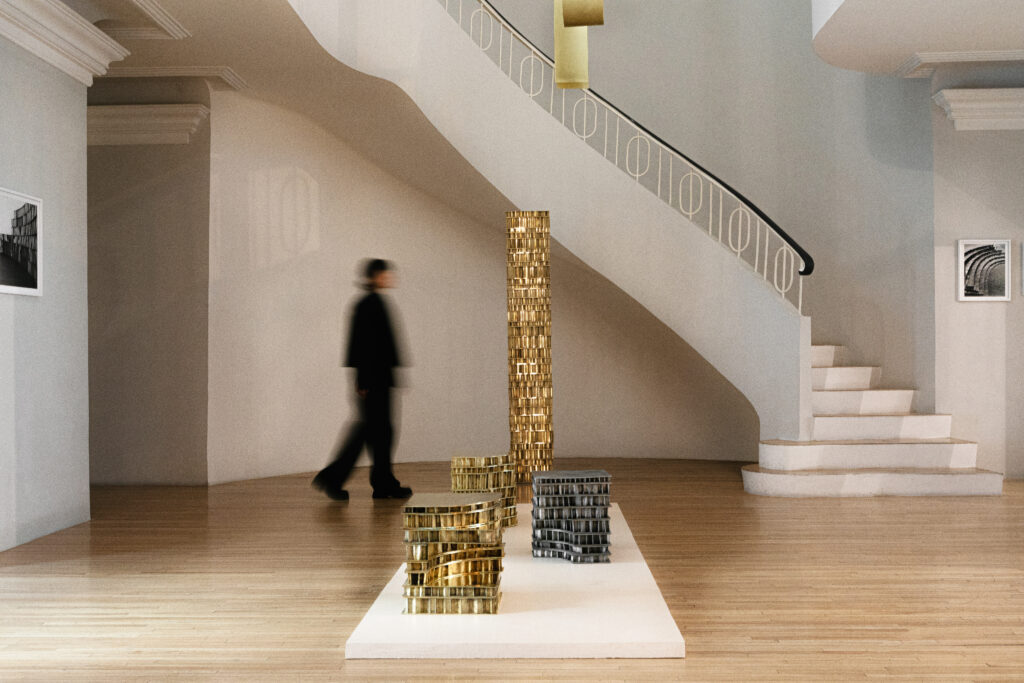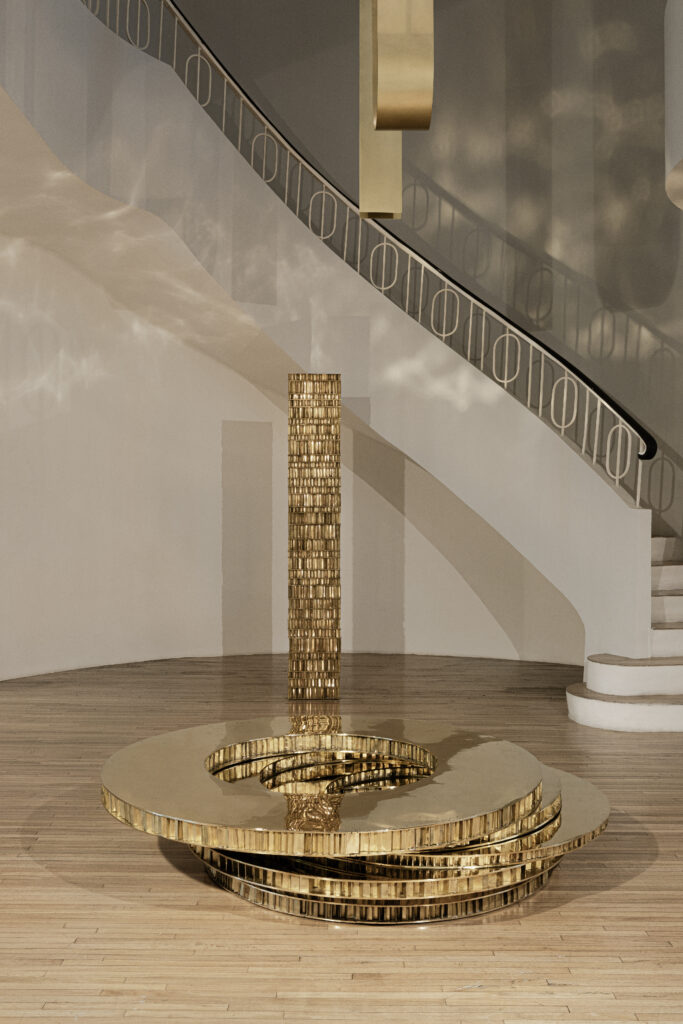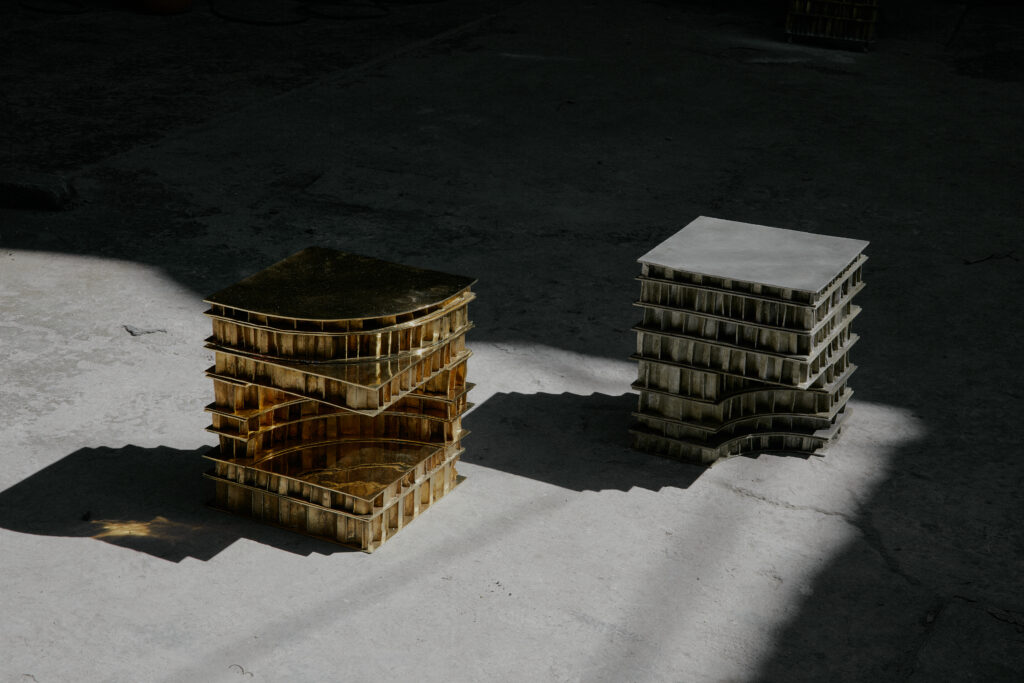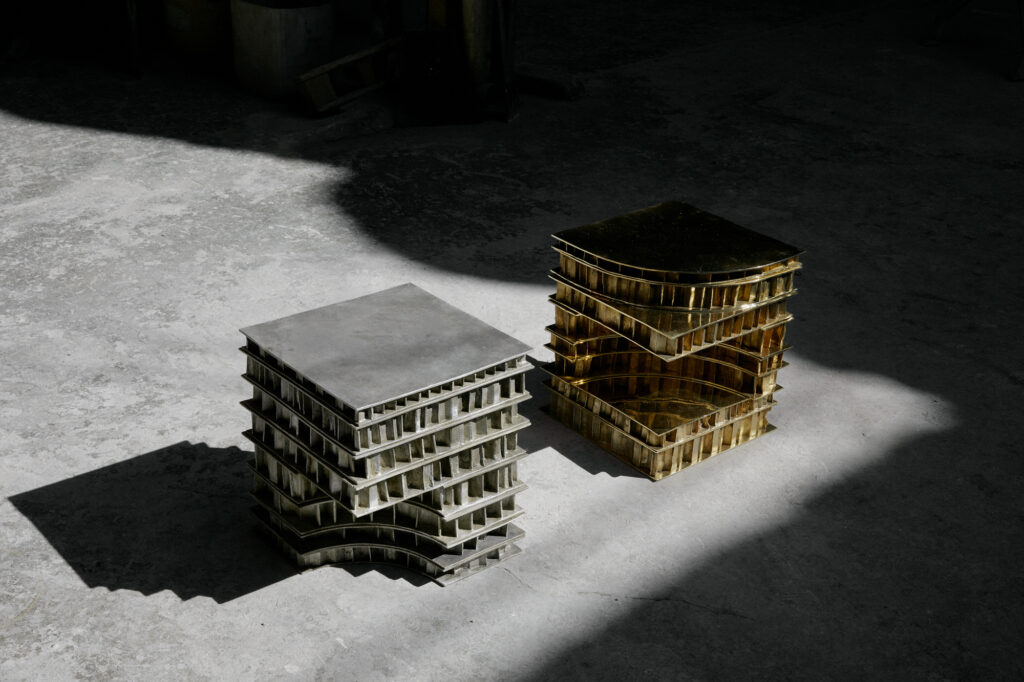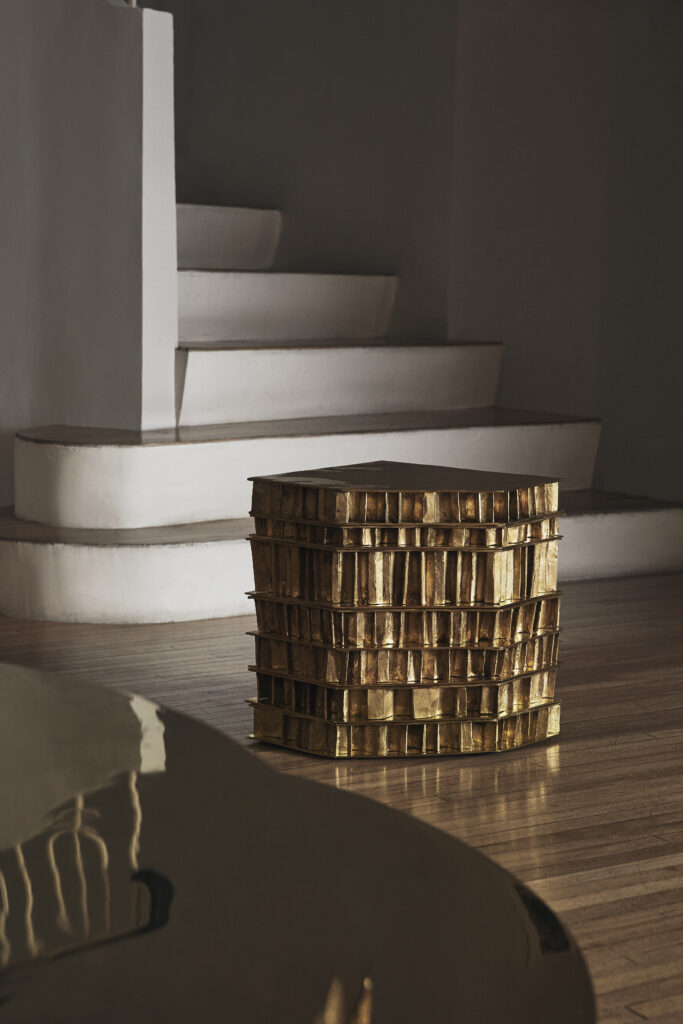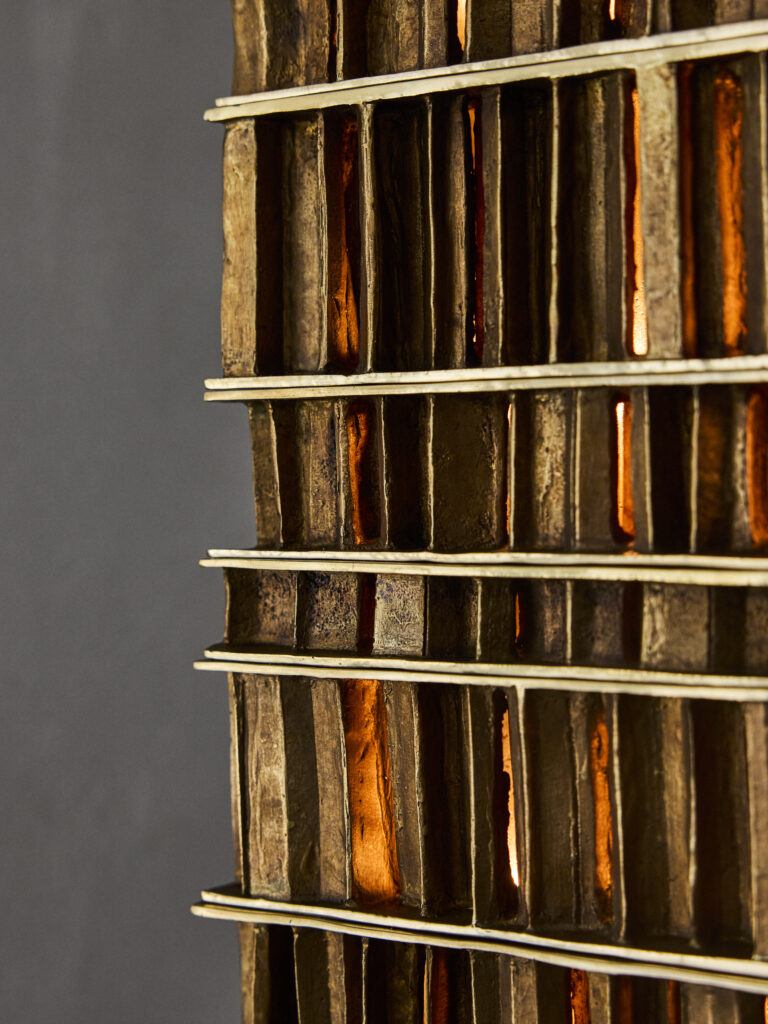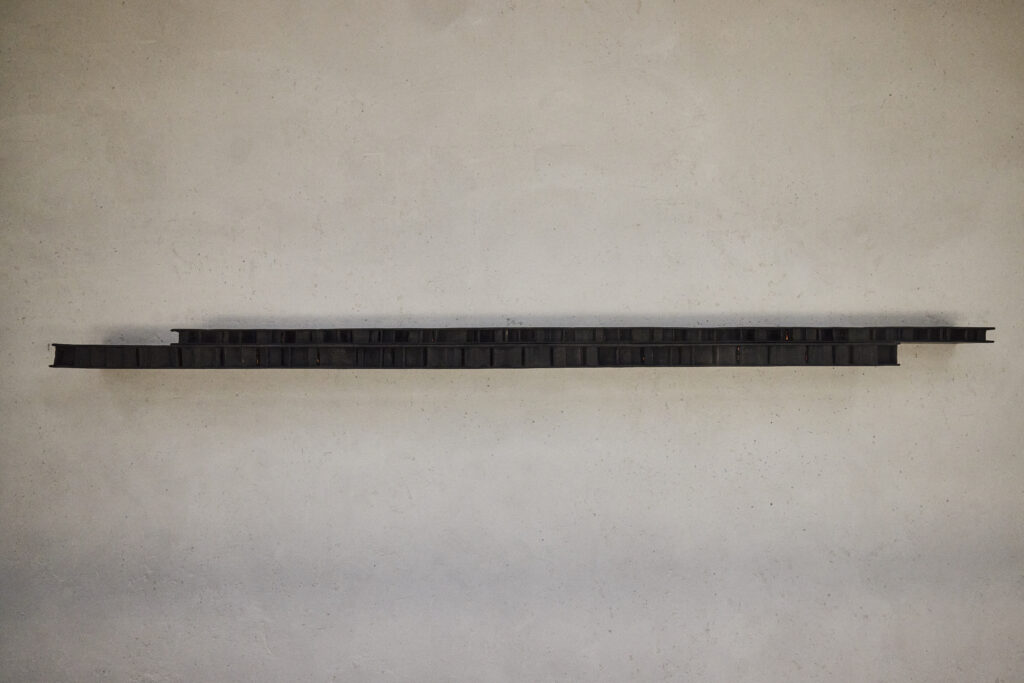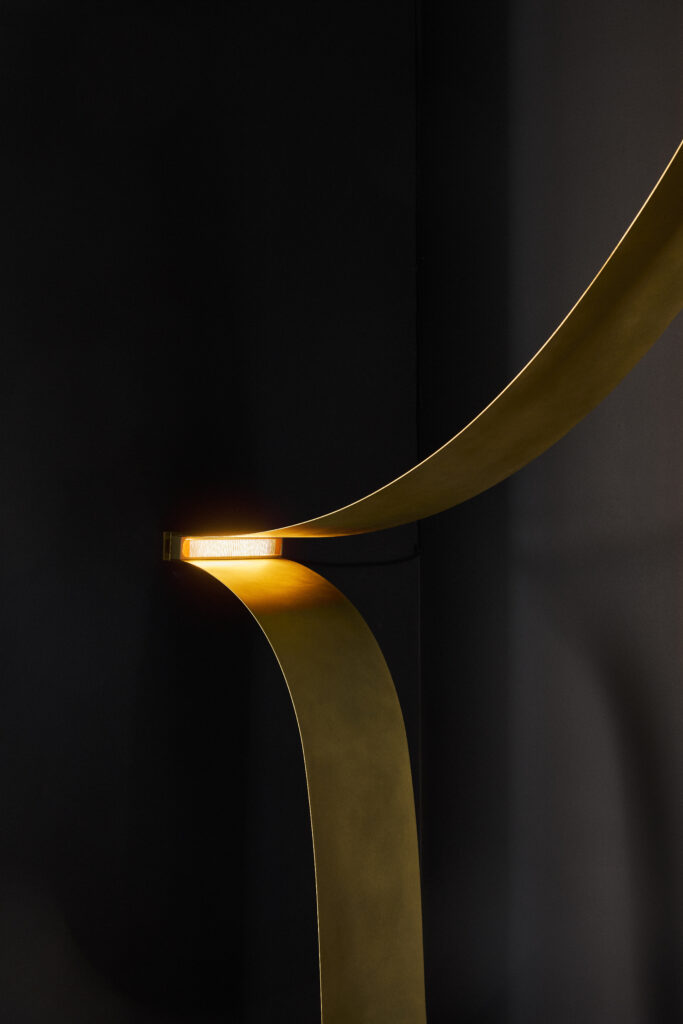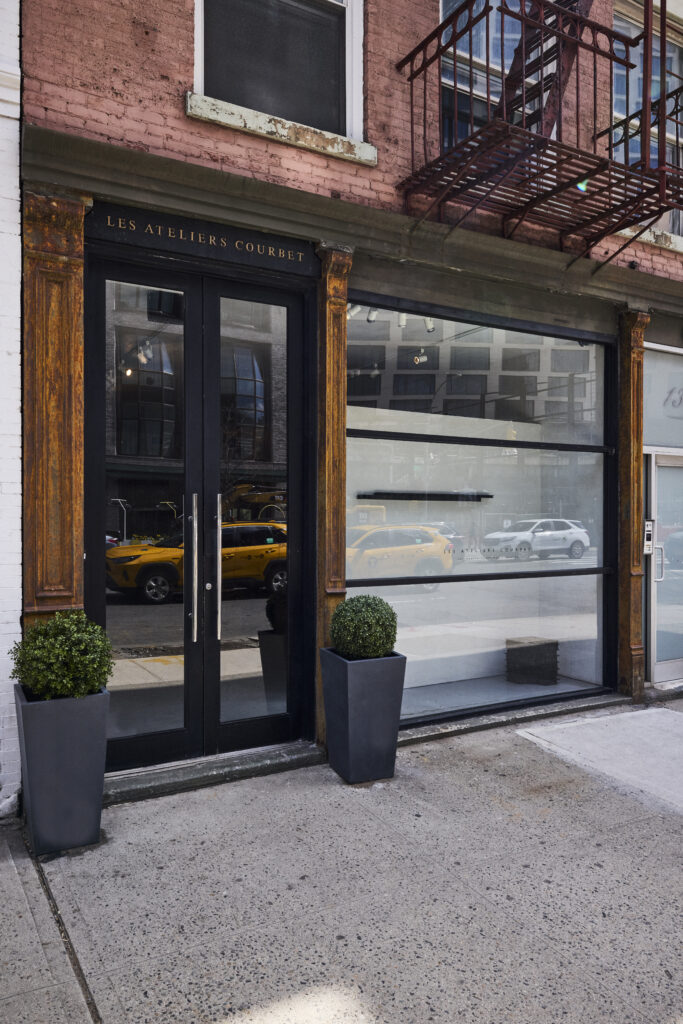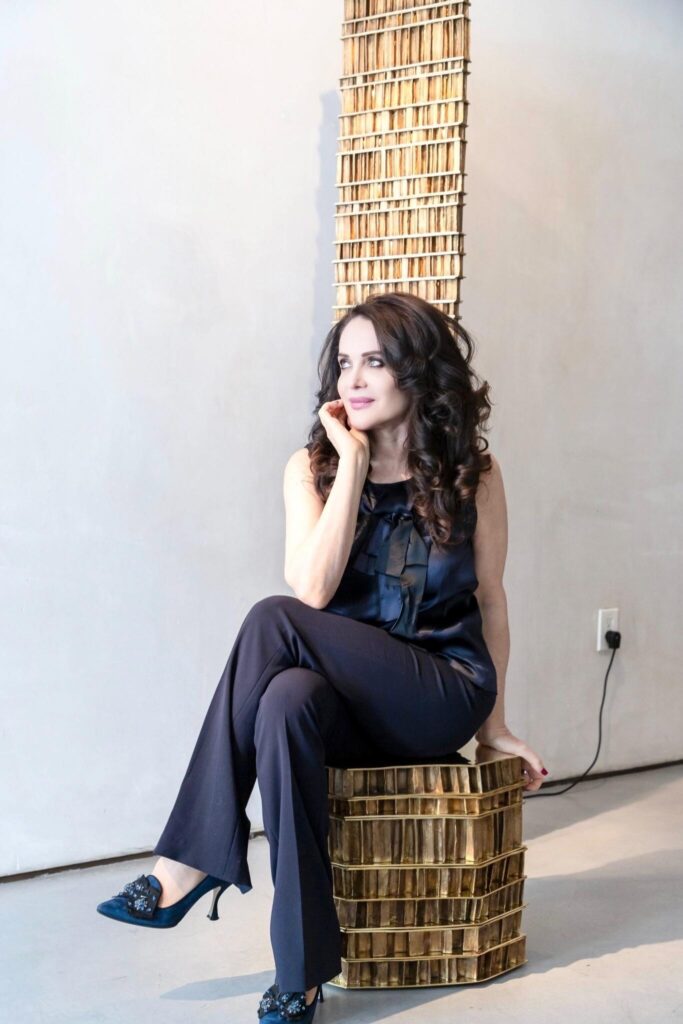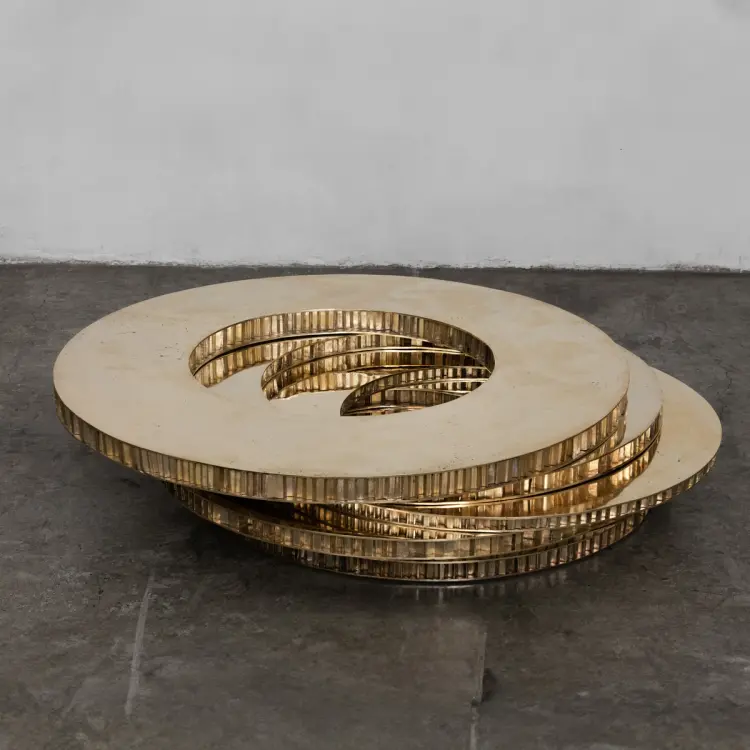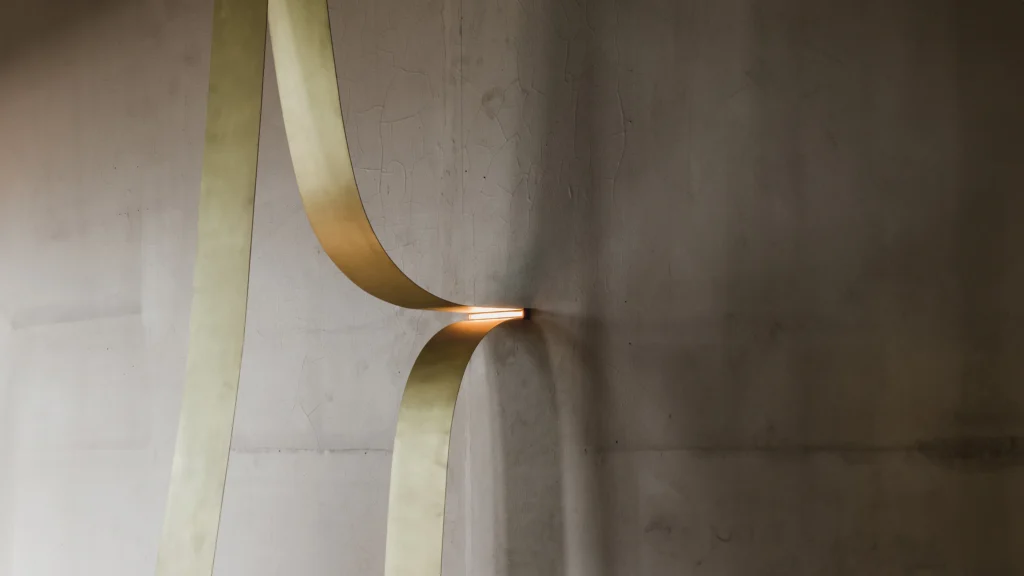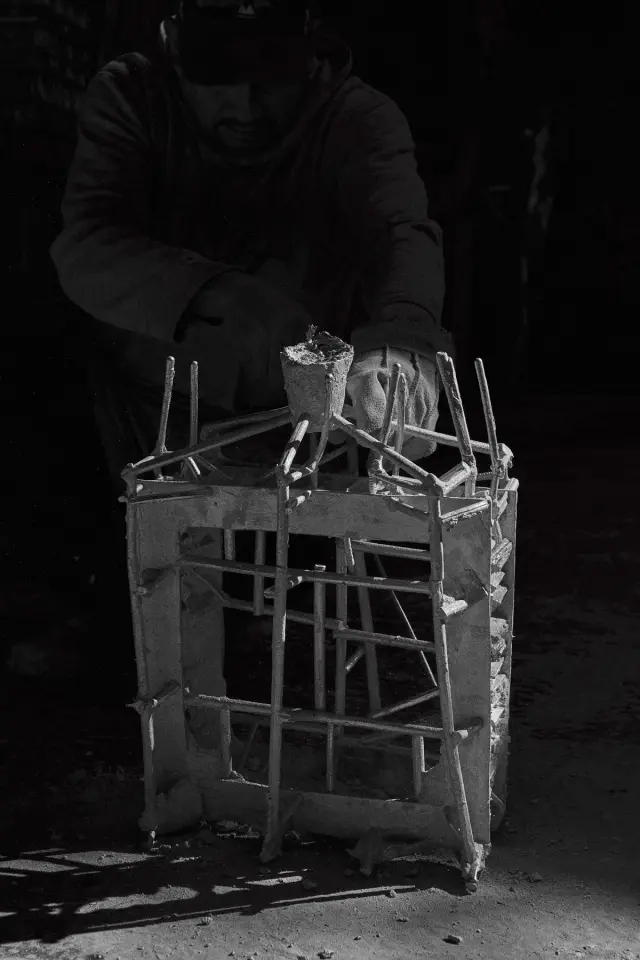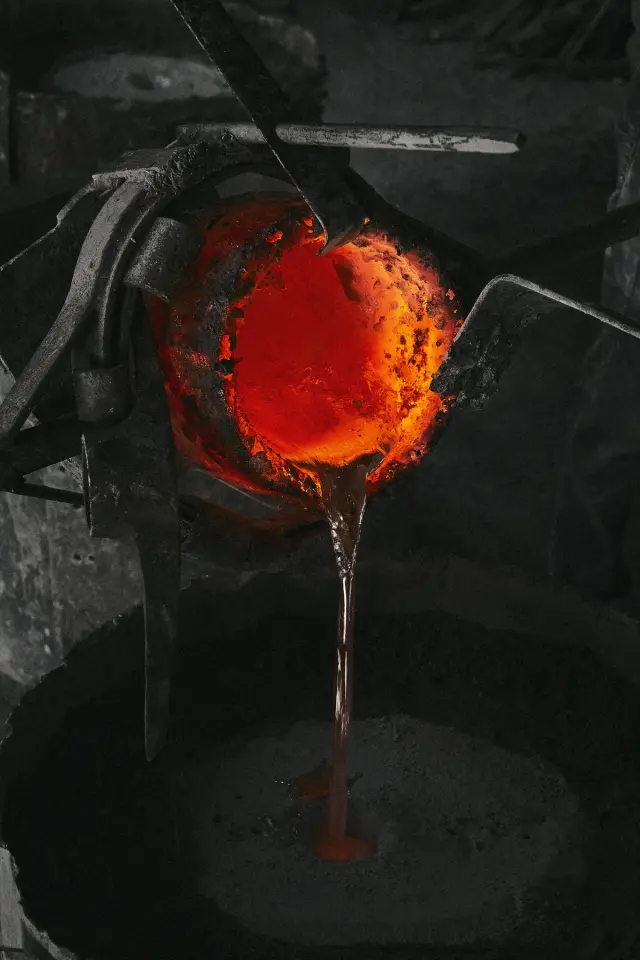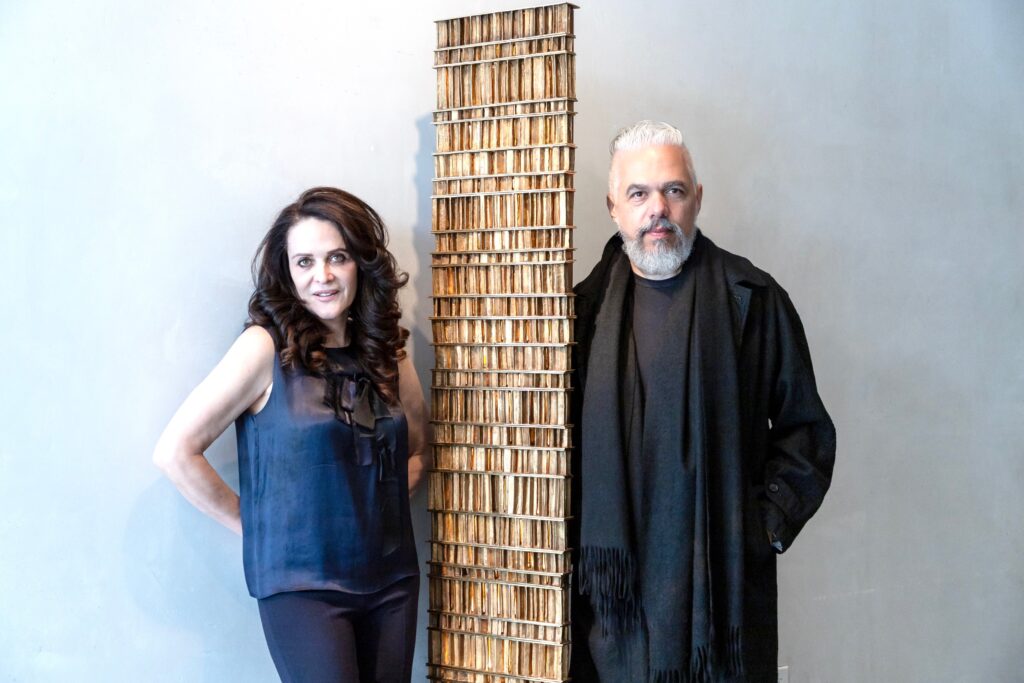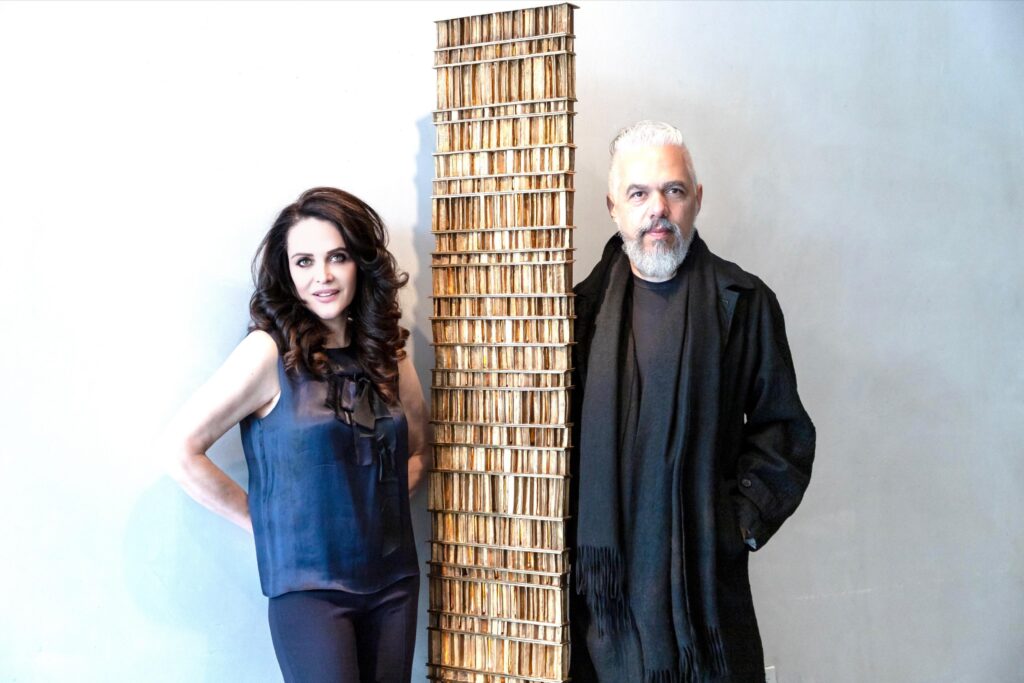
According to award-winning Mexican multidisciplinary designer Héctor Esrawe, “in the last 20 years, something in Mexico has changed.” This is in reference to the transformation and shifting away from international inspiration and instead embracing and rediscovering local heritage and culture while constructing a new national, personal, and contemporary identity in Mexican architecture and design.
The way in which light reflects on surfaces is central to the pieces of furniture in Esrawe’s new series, GEAR, which is on display in his first solo New York show, titled Transmutation, which opened this week at Les Ateliers Courbet, the gallery that celebrates master craftsmen and contemporary design. This exhibition presents an opportunity for use, New Yorkers, to take a close look at the way in which Esrawe pays tribute to Mexico and its artisanal heritage by creating the contemporary while extracting from the traditional, and simultaneously blending craft, architecture, and personal narrative.
Born in 1968 in Mexico City, Esrawe was trained as an industrial designer, and has lived in Mexico City his entire life. He wears many hats, being equally ambitious and creative in all of his endeavors. He is the founder of a design/architecture studio that employes 50 architects and designers and is building all over the world. He is also the co-founder of the Mexico City-based design gallery MASA, where contemporary collectible design is fabricated by Mexico’s craftspeople in glass, stone, wood, and metal. He even co-founded a perfume brand, Xinù, where scents are made of raw materials packaged in bottles which can be repurposed. As a contemporary designer, he is aware of the values of our time: sustainability, recycling, the handmade, and narrative.
It is the local traditions of metalsmithing which shine through in this series of functional objects on display. Esrawe took the freedom to lead the craftspeople—who typically create figurative sculptures cast in the lost-wax techniques—towards creating furniture of contemporary shapes. They all have a strong architectural quality, and the textures are derived from cardboard’s honeycomb cells, which, when rendered in bronze and aluminum, take on a life of their own. I fell in love with the light towers, cast in both bronze and aluminum, where the light penetrates through the texture and therefore takes on the form of those textures when reflected on the surface, thus balancing the vertical and the horizontal.
It is no wonder why Esrawe’s hero is Mexican architect/designer Oscar Hagerman (b. 1936), who is also his former teacher. It is Hagerman’s brilliant balancing of the sophisticated and the native along with his constant acknowledgement of indigenous cultures of Mexico while engaging with those communities that has come to inspire Esrawe to recognize the greatness of his own culture and heritage.



